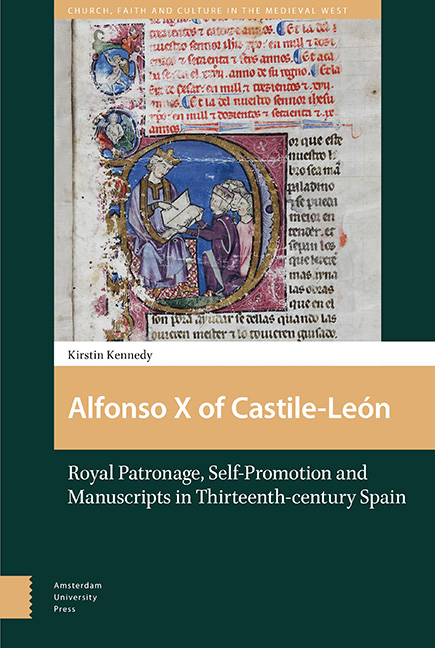 Alfonso X of Castile-León
Alfonso X of Castile-León Book contents
- Frontmatter
- Dedication
- Contents
- Acknowledgements
- List of Figures
- Abbreviations
- Introduction: ‘the king Makes a Book’
- 1 Alfonso X, his Literary Patronage, and the Verdict of Historians
- 2 Alfonso in his Texts: literary Models and Royal Authorship
- 3 Reality, Politics, and Precedent in Images of Alfonso
- 4 Codices Laid Out for a King : the Appearance and Production of Alfonsine Manuscripts
- 5 The Circulation of Alfonsine Texts: Astrological Works and Chronicles
- Concluding Remarks
- Manuscript Sources
- Index
4 - Codices Laid Out for a King : the Appearance and Production of Alfonsine Manuscripts
Published online by Cambridge University Press: 21 November 2020
- Frontmatter
- Dedication
- Contents
- Acknowledgements
- List of Figures
- Abbreviations
- Introduction: ‘the king Makes a Book’
- 1 Alfonso X, his Literary Patronage, and the Verdict of Historians
- 2 Alfonso in his Texts: literary Models and Royal Authorship
- 3 Reality, Politics, and Precedent in Images of Alfonso
- 4 Codices Laid Out for a King : the Appearance and Production of Alfonsine Manuscripts
- 5 The Circulation of Alfonsine Texts: Astrological Works and Chronicles
- Concluding Remarks
- Manuscript Sources
- Index
Summary
The depictions of Alfonso in miniatures and initials were not the only visual means that artists and scribes used to persuade readers of his political ideology and the virtues of his kingship. The care taken to match his image to a particular text extended to the overall decoration and layout of the manuscripts themselves. The frames that enclose miniatures and tables in the códice rico and ‘Florence’ copies of the Cantigas, and in the astronomical tables in the Canones de Albateni, incorporate royal and imperial heraldry to reinforce Alfonso's connection with, and authority over, the work. The border around the pair of miniatures that open Part IV of the General estoria (BAV MS Urb. Lat. 539) may also have been intended to incorporate heraldry: six small blank squares interrupt the frame (see Figure 1). However, a striking feature of layout preserved in both the Estoria de Espanna (Escorial MS Y.I.2) and in the General estoria Part IV (BAV MS Urb. Lat. 539) suggests that Alfonso attempted to distinguish chronicles compiled under his patronage with a distinctive mise-en-page that could easily be reproduced in later copies and thereby perpetuate his authority. This consists in framing the rubrics that announce the major divisions of the text into books with a circle set within a square, and filling the space between circle and square with dense pen-flourishing (Figure 4).
This distinctive layout appears to have been characteristic of all parts of the chronicles copied for Alfonso, as some later manuscripts of the General estoria and the Estoria de Espanna preserve the device of encircling rubrics in roundels, albeit in a much simplified form. In these manuscripts, the roundels are barely decorated and are not placed within a square.
The use of roundels to frame rubrics that announce important divisions in texts, or which distinguish units of information, is found in other Western manuscripts of the period and is associated with specific types of text. The practice can be traced to the late Roman period, and in the Christian era it was adopted to indicate divisions in the books of the Bible, canon tables, and in any text which required complex lists to be set out clearly for ease of reference, such as diagrams to indicate degrees of consanguinity.
- Type
- Chapter
- Information
- Alfonso X of Castile-LeónRoyal Patronage, Self-Promotion and Manuscripts in Thirteenth-century Spain, pp. 153 - 184Publisher: Amsterdam University PressPrint publication year: 2019


